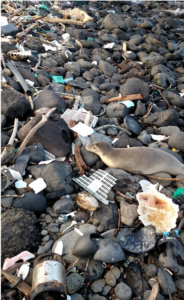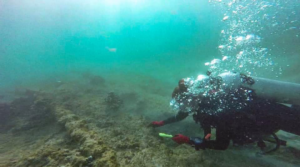Marine Debris in the Anthropocene
By Kathleen Barkats
 We live in an era where the marine environment is littered with debris. Marine debris can enter the ocean in a variety of ways, but it all comes from one predominant source: humans. Beaches that once appeared pristine have microplastics engrained in the sand, while fishing gear and discarded food containers float along a conveyor belt of ocean currents. As of 2018, the Great Pacific Garbage Patch, just one of several large maritime trash concentrations, is estimated to contain 79,000 metric tons of ocean plastic, with 46% being comprised of fishing gear (Lebreton et al. 2018). This issue is of enormous proportions and affects the health of humans and the ocean on a global scale.
We live in an era where the marine environment is littered with debris. Marine debris can enter the ocean in a variety of ways, but it all comes from one predominant source: humans. Beaches that once appeared pristine have microplastics engrained in the sand, while fishing gear and discarded food containers float along a conveyor belt of ocean currents. As of 2018, the Great Pacific Garbage Patch, just one of several large maritime trash concentrations, is estimated to contain 79,000 metric tons of ocean plastic, with 46% being comprised of fishing gear (Lebreton et al. 2018). This issue is of enormous proportions and affects the health of humans and the ocean on a global scale.
Human influence on terrestrial and marine ecosystems has led the scientific community to refer to the age of humanity as the Anthropocene (Zalsiwiscz et al. 2018). The Anthropocene describes a new geologic epoch with an environment dictated by growing human populations, activities, and impacts. Anthropogenic marine debris is just one threat to our ocean ecosystem – but its pervasive nature is having irreversible impacts.
Synthetic polymers, or plastics (Bergmann 2016) are among the most prevalent marine debris items. Humans developed synthetic polymers as disposable, cost-effective, and widely applicable manufacturing material. These plastic products gained traction for their convenience and durability. However, plastic is so durable that it cannot fully break down in the environment. Rather, it breaks up into smaller pieces known as microplastics, that take lifetimes to fully degrade (Bergmann 2016).
Once marine debris is seaborne, it creates a myriad of issues for marine species including entanglement, ingestion, and habitat destruction. Interactions with fishing gear can leave marine life injured, hooked, or trapped, where they are vulnerable to drowning or predation. Coral reefs are often found entangled in fishing line, which can reduce survivability and put critical habitat at risk for marine species that depend on them. Additionally, seabirds have been known to mistake plastics for food. They feed on plastic items and feel full from the bloat, but because they cannot digest plastics, the birds end up starving to death (Leeson 2016).
While charismatic megafauna such as whales, dolphins and seals draw attention to the issue, the impact of marine debris on smaller species is just as important. When plastic enters the food web at low trophic levels, its toxicity magnifies into species higher up, like top predators such as Hawaiian monk seals, sharks, whales, and humans (Bergmann 2016). Beyond the harm to human health, this also harms the fishing industries because seafood contains plastic particles.
While the issue may seem overwhelming, efforts to remove marine debris from our oceans are underway. Hawaii Marine Animal Response (HMAR) added our Marine Debris Program (MDP) to our line-up of other marine species and ocean ecosystem programs in August 2019 to help remove hazardous litter that is found in the coastal waters of Oahu. Our MDP team, comprised of staff and volunteers, conducts snorkel and SCUBA dives several times a month to physically disentangle coral heads and pick up marine trash, like derelict fishing gear that causes injuries and death to protected marine animals. Since August, and focusing our efforts in specific locations frequented by Hawaiian monk seals and sea turtles, we have removed more than 2,000 feet of monofilament fishing line, 45 hooks, and 52 weights. This is a significant impact, but each individual can contribute as well.
- Refuse Single Use.
One of the biggest steps someone can take is to refuse single-use plastic items. Reusing and recycling these materials is helpful, but reducing initial demand and consumption is the most influential. Despite a higher initial cost, sustainable alternatives are more cost-effective in the long run because there is no need to replace them.
- Dispose Responsibly.
Learn what materials are recyclable in your area. On Oahu, trash is collected, incinerated, and converted to energy at the H-POWER facility (Hawaiian Electric 2020). The goal of this process is to reduce the amount of waste entering landfill while simultaneously creating energy for the island. When we dispose properly, we limit the litter ending up in the ocean.
- Do Your Part.
By participating in removal efforts, we can make a significant difference for our ocean. There are numerous opportunities to volunteer at formal clean ups on land and in the water. Even when not at designated events, you can clean up litter as you see it. It may seem futile to pick up small pieces of trash and plastic from a beach. However, humans are the most widespread species, and when everyone takes time to remove even a little debris, the impact becomes much greater.
The Anthropocene is here, but we can still choose what our impact will be. If all 7 billion of us take small steps to make a difference, we can make lasting change for our oceans.
Click here to learn how you can participate in HMAR’s Marine Debris Program today!

References and further reading:
- Asoh K., Yoshikawa T., Kosaki R., Marschall E. 2004. Damage to Cauliflower Coral by Monofilament Fishing Lines in Hawaii. Conservation Biology18(6): 1645-1650.
- Bergmann, Melanie. Marine Anthropogenic Litter. Springer International PU, 2016.
- Hawaiian Electric. “H-POWER (Covanta Honolulu Resource Recovery Venture).” Hawaiian Electric, 2020, www.hawaiianelectric.com/clean-energy-hawaii/our-clean-energy-portfolio/renewable-energy-sources/biomass/h-power.
- Lebreton, L., Slat, B., Ferrari, F. Sante-Rose, B., Aitken, J., Marthouse, A., Hajbane, S., Cunsolo, S., Schwarz, A., Levivier, A., Noble, K., Debeljak, P., Maral, H., Schnoeneich-Argent, R., Brambini, R., Reisser, J. 2018. Evidence that the Great Pacific Garbage Patch is rapidly accumulating plastic. Scientific Reports (8): 4666. doi:10.1038/s41598-018-22939.
- Leeson, Craig, director. A Plastic Ocean.
- Zalasiewicz, Jan, et al. “The Anthropocene.” Geology Today5 (2018): 177-181.
